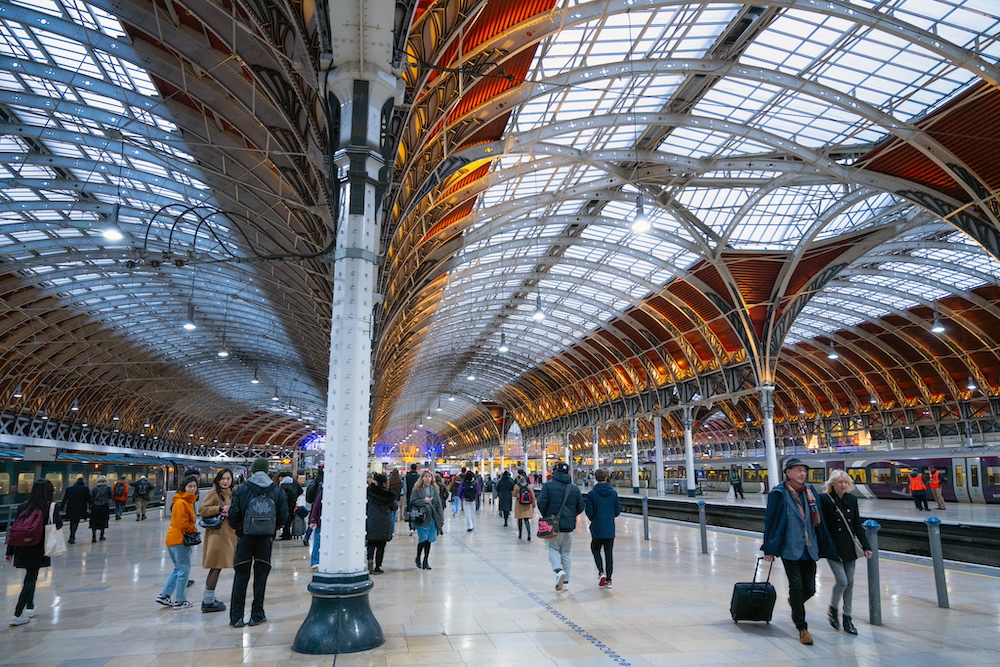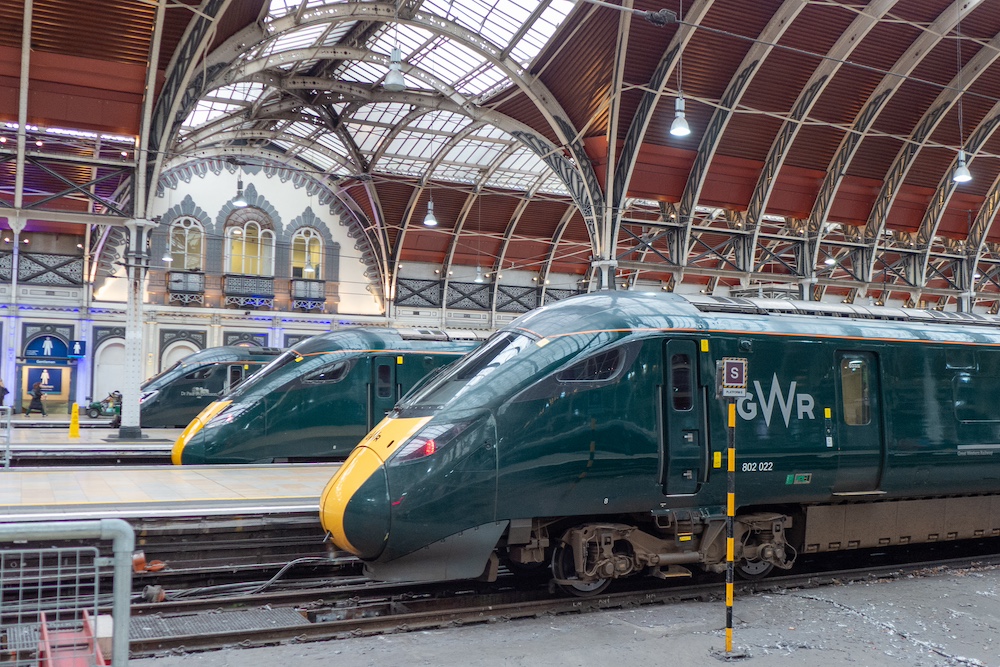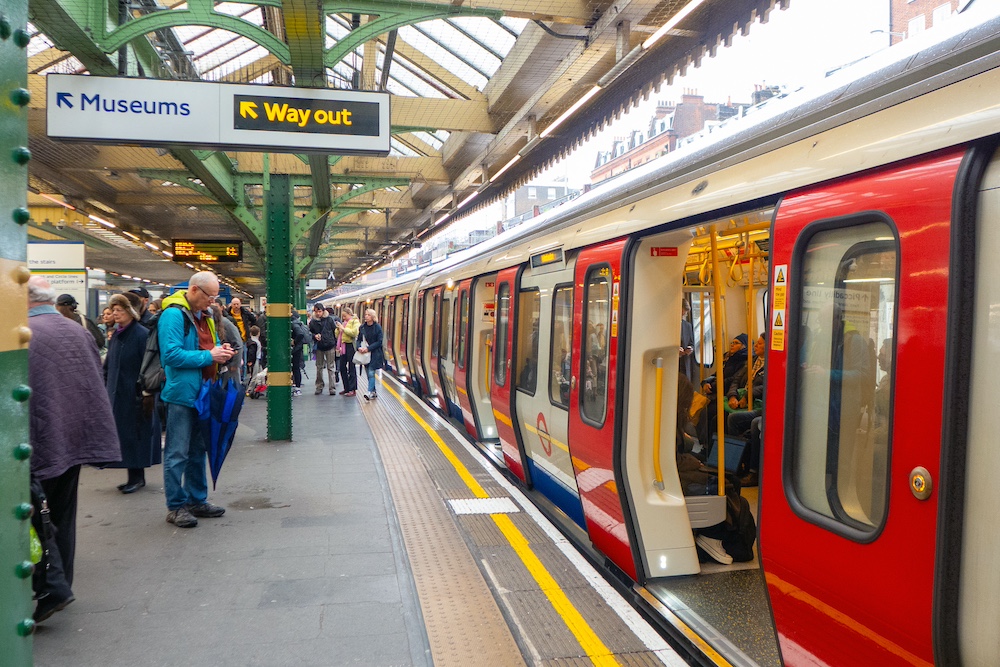Exploring London by rail

Exploring London by rail unlocks the best the metropolis has to offer. As one of the world’s great cities, London is a popular destination for American travelers and one of the planet’s most railroad-intensive places. It is populated by amazing Victorian stations that blend the finest examples of 19th-century railroad architecture with the latest in modern rail transport. The city is connected by overlapping networks of urban passenger railways that could take years to explore.
There are countless ways to approach London and endless paths to explore it. On this visit, my wife Kris and I arrived by plane at Heathrow — the largest of London’s airports. Three rail options connect Heathrow to central London. The Underground’s Piccadilly Line is the cheapest and slowest, offering direct access to myriad locations in the city, including popular stations such as Leicester Square, and connections with other Underground routes. The most recent rail link offers a more economical option. A branch of the Elizabeth Line — named for Queen Elizabeth II — uses the same rail link to Heathrow while serving the new Crossrail route reaching stations on the way from the airport in central London and points east. We chose the third option, the Heathrow Express.

This train runs directly from Heathrow Terminal 5 to Paddington Station. This option minimized the difficulties of navigating the Underground system at rush hour with heavy luggage. From Paddington, we took a taxi to the Clermont Hotel at Charing Cross Station. This hotel is located at the heart of Central London and close to many attractions, like the West End theatre district. Charing Cross serves a variety of mainline rail services on the old Southern Region, including frequent service to Hastings. This proved convenient as we took a journey outside London to the lovely historic town Tunbridge Wells, where we traveled on the preserved Spa Valley Railway. Charing Cross is also served by the Northern and Bakerloo Underground lines. Nearby are the gardens and Thames River walk at Victoria Embankment — also the location of the busy Underground station serving District and Circle lines.
The river itself is served by several boat services, including Uber Boats by Thames Clippers that connect two dozen piers in the city. We were a short walk from Trafalgar Square, the location of the National Gallery. Admission is free and its world-class art collection includes my favorite railway painting: Rain, Steam and Speed by J.W.M. Turner.
Underground origins
The precursors to the London Underground began operation in the 1860s using steam locomotives. Electrification began in the 1890s. The network gradually expanded and evolved, and today it is among the most extensive, busiest, and fascinating rail-transit systems in the world, carrying as many as 4 million passengers daily. In addition to London’s countless rail tunnels, there are networks of subterranean foot passages that permit transfer between routes and grade-separated below-street connections.
The Underground was famously used as an air-raid shelter during the world wars. One of my favorite routes is the Circle Line, which makes a complete loop through Central London. We traveled clockwise from Embankment to South Kensington to visit the Victoria & Albert, Natural History, and Science museums — reached by direct passages from the Underground station. The museums are popular and admission is free. Advance booking is recommended to avoid long lines.
For industrial interest, I recommend visiting the Science Museum’s Energy Hall, where a variety of early stationary engines are displayed. Locomotive enthusiasts should visit the museum’s “Making the Modern World” display, which features significant early steam locomotives and a variety of antique, hand-crafted railroad models, including a scale broad gauge Erie Railroad 4-4-0.
Train-watching tips
Among my favorite London train-watching locations is the busy station at Clapham Junction (reachable using direct services from Victoria and Waterloo stations). If you want to see diesel-hauled freights on the move, consider visiting Kensington (Olympia) station which is reachable by either the Overground circular suburban rail network or a branch of the Underground.
Journey planning
Fare information can be found at Transport For London’s website. A traveler could easily make a hobby comparing fare payment options. In the past, I’ve bought paper Day Travel Cards or invested in an Oyster Card (electronic fare storage card using tap-on/tap off), but on this trip, we found it best to use our Visa Card with tap card function. Remember: each passenger should carry their own card, use that same card for each 24-hour period, and tap on when entering and tap off when exiting Underground stations.
Special thanks to Hassard Stacpoole for providing help with London travels.














